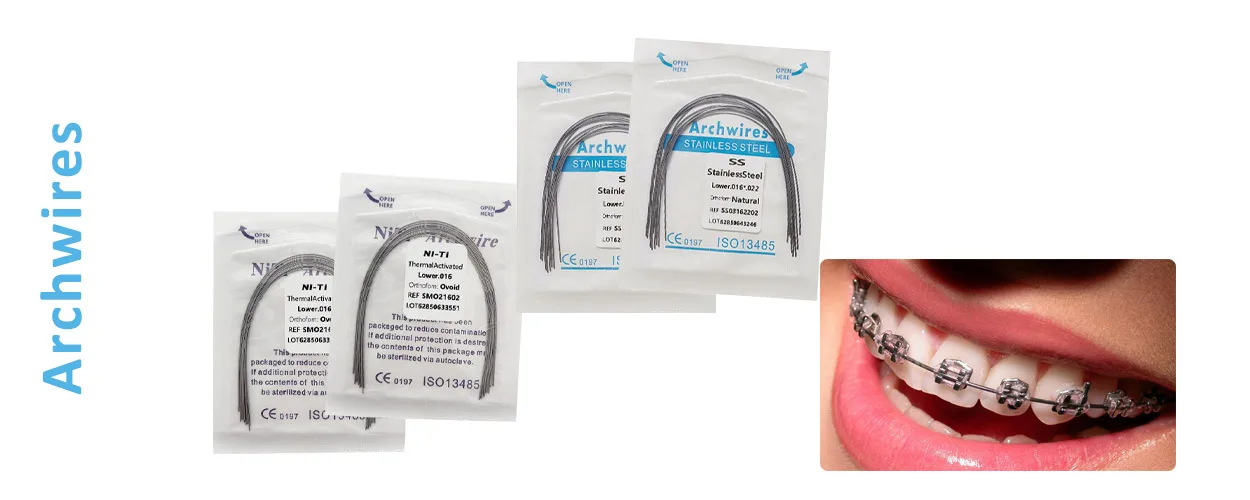Nel trattamento ortodontico, Archwire è uno dei componenti principali del sistema di correzione della staffa. Se sei un ortodontista o un leader di acquisti dentali, Questo articolo analizzerà le caratteristiche tecniche, Scenari di applicazione e suggerimenti di acquisto di archi ortodontici da una prospettiva professionale, aiutandoti a soddisfare le tue esigenze cliniche in modo più efficiente.
1. Quali sono gli archi ortodontici?
Thin, flexible metal wires that are fastened to dental brackets are called orthodontic archwires. Col tempo, these wires gradually shift the teeth into the proper position by applying light, continuous pressure. These wires are known as “arch wires,” and the lower arch is formed by the wires on the lower teeth, while the upper arch is formed by the wires on the upper teeth.
Agiscono da motore guida per i denti e sono essenziali per il controllo del movimento dei denti. Senza di essa, I tuoi denti storti non si muoveranno mai. Questi fili delle parentesi sono disponibili in dimensioni diverse e hanno composizioni di materiale diverse.
2. Qual è la funzione degli archwires?
As a dynamic mechanical component of the orthodontic system, the orthodontic archwires achieves passive movement of teeth through an accurate compression mechanism. During the initial treatment stage, orthodontiologists select nickel-titanium alloy archwires with appropriate elastic modulus. Their shape memory properties can apply a continuous orthodontic force of 0.5 to 1.5N/cm² to the misaligned dentition. This mechanical stimulation triggers alveolar bone remodeling by activating the proliferation of osteoclasts on the pressure side and osteoblasts on the tension side, achieving a monthly displacement of 0.1 to 1mm for the teeth.
Archwires svolgono tre funzioni essenziali:
| Vettoriale Guida | Stabilire la curvatura dell'arco dentale ideale attraverso la modellatura preformata |
| Forza consegna | Traduzione dei vincoli del sistema di staffa nel movimento dei denti direzionali |
| 3D Control | Regolazione dell'inclinazione assiale e del posizionamento rotazionale tramite ingegneria della coppia |
The dynamic adjustment mechanism runs through the entire treatment cycle: follow-up is conducted every 4 A 6 settimane, and orthodontists maintain the optimal orthodontic force of 20 to 150g/cm by replacing the archwire. In the middle and later stages of treatment, it transitions to the stainless steel archwire stage (0.016×0.022 inches to 0.019×0.025 inches), with an elastic modulus of 210GPa. This enables the establishment of an accurate three-dimensional mechanical system, allowing for fine regulation of root tip movement and occlusion.
Profit’s three-stage theory (Profit, Campi, & Sarver, 2018) is followed by this biomechanical system: initial alignment → vertical control → torque fine-tuning, which leads to 80–90% repositioning of the dental arch and functional occlusal reconstruction. According to clinical data, the archwire system’s standardized application can maintain the root resorption rate below the safe threshold (< 2mm) and boost orthodontic treatment efficiency by 40%.
3. La scienza dietro gli archwires ortodontici
Today’s archwire is an engineering marvel, in contrast to orthodontics’ homogeneous approach in the early 20th century. Materials science holds the key to their success: the right alloy selection has a direct impact on treatment speed, comfort, and result.
Consider NiTi (nickel-titanium) wire. Almost no one anticipated that NiTi would have dental potential when Dr. William J.. Buehler first noticed its “shape memory” qualities in the Naval Research Laboratory in the 1960s. These days, this alloy is a major solution to the issue of crowded teeth because it can “remember” the patient’s ideal dental arch shape and can withstand up to 8% strain (whereas steel can only withstand 1%).
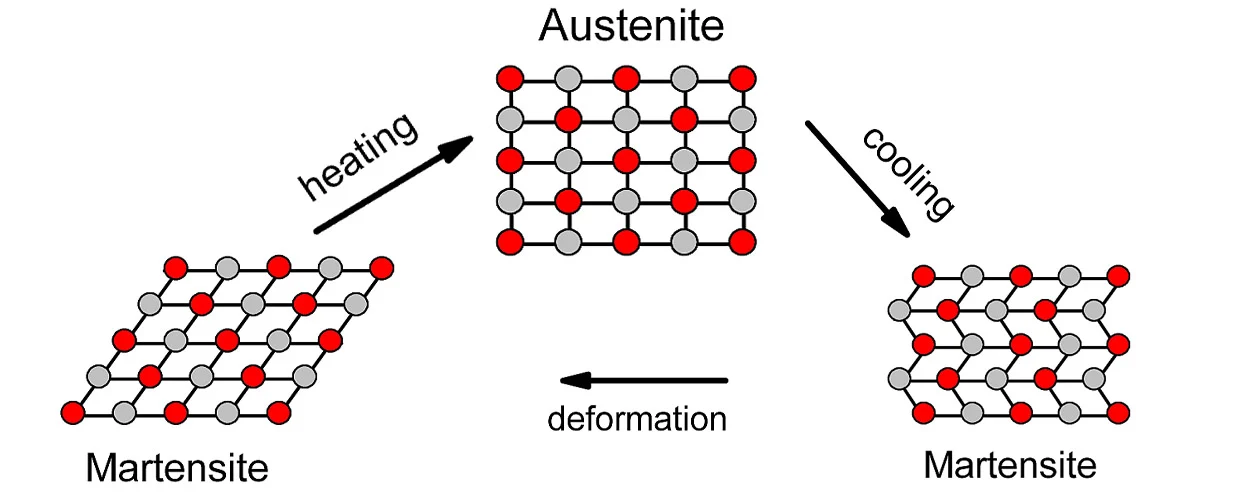
4. Classificazione degli archwires ortodontici
Orthodontic archwires can be classified into three major types based on the different material properties:
UN. Archwires di nichel-titanio (Niti)
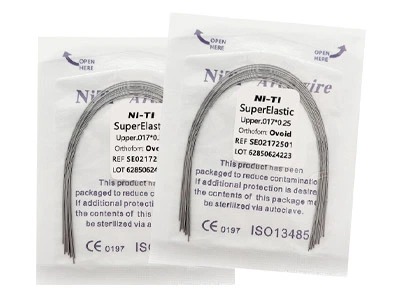
B. Archwire in acciaio inossidabile
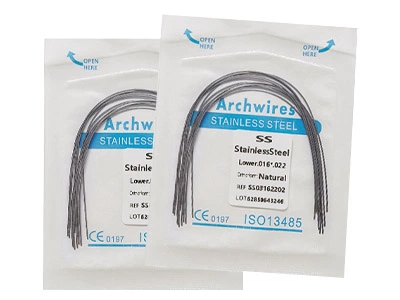
C. Beta-Titanio Archwire
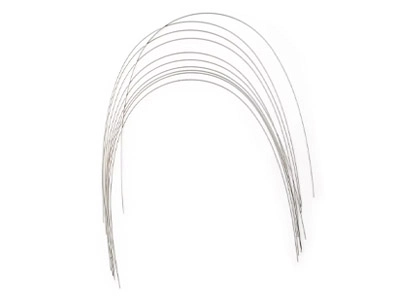
5. Criteri di selezione clinica per gli archi ortodontici
Match elasticity to strength according to the treatment stage
For initial correction, superelastic nickel-titanium archwires should be given priority to reduce patient discomfort. In the middle and later stages, stainless steel or β -titanium bow wires are replaced to precisely control the force.
Focus on the surface treatment process
High-quality bow wires should have a smooth surface (such as electrochemical polishing) to reduce the friction of the brackets and avoid mucosal irritation.
Standardized dimensions and memory performance
Select archwires that meet the AAO (American Orthodontic Association) standards to ensure compatibility with mainstream bracket systems and high shape memory stability.
6. Clinical Usage and Maintenance Suggestions
- The archwire replacement cycle: The patient’s tooth movement speed and the level of orthodontic archwires fatigue determine how often it is adjusted, which is typically every 6 A 8 settimane.
- Advice for patients: Keep in mind to refrain from chewing hard objects, apply orthodontic wax to ease any initial discomfort caused by friction, and clean the archwire on a regular basis to avoid plaque buildup.
- Storage requirements: To prevent oxidation or deformation, unopened bow wires should be kept in a dry atmosphere.
7. Perché scegliere il nostro Archwires ortodontici?
Come esportatore specializzato nella ricerca e nello sviluppo di materiali di consumo dentali per 15 anni, Offriamo:
Controllo di qualità rigoroso: I prodotti sono ISO 13485 certificato, FDA/CE Confort e batch rintracciabile.
Scelte diversificate: Coprendo l'intera gamma di dimensioni da 0,012 ″ a 0,021 × 0,025 ″, Supportare la personalizzazione multi-materiale come il nichel-titanio, acciaio inossidabile, beta-titanio e così via.
Condivisione dei casi: Soluzione del filo di prua per migliorare l'efficienza della clinica.
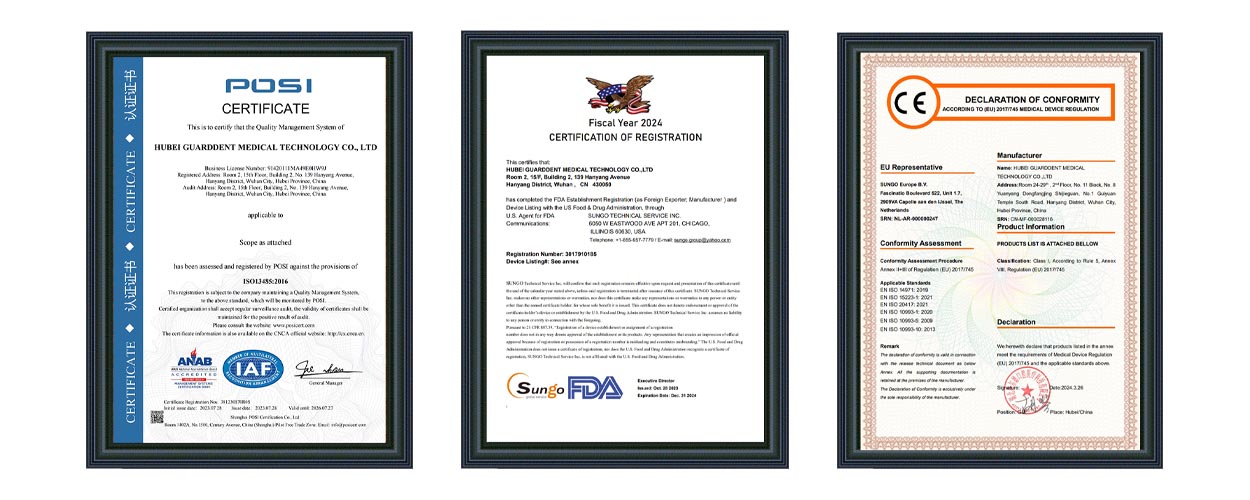
Una catena di cliniche dentali a Barcellona, Spagna, ridotto il ciclo medio di trattamento dei casi iniziali di 15% e il tempo per le regolazioni di follow-up da 20% Usando i nostri fili di nitinolo. Il feedback del medico è che "la stabilità della memoria della forma dell'arco si riduce significativamente la complessità dell'operazione, che è particolarmente adatto per i pazienti adolescenti. "
Conclusione
Despite their small size, orthodontic archwires are essential components that influence the correction effect. Selecting the appropriate archwire can boost patients’ confidence in the course of treatment in addition to increasing the effectiveness of diagnosis and treatment. Please do not hesitate to contact us at any time if you would like free samples or more information about our products.
Riferimenti
- Shah, S. J., Ali, M., & Matthews, M. E. (2015). Materiali e tecniche ortodontiche. Journal of Clinical Orthodontics, 49(8), 23-34.
- Ribeiro, T. K. S. J., Silva, S. UN. S., & da Silva, D. P. (2020). Meccanismi biologici del movimento dei denti: Una recensione. European Journal of Orthodontics, 42(2), 55-64.
- Profitto, W. R., Campi, H. O., & Sarver, D. M. (2018). Ortodonzia contemporanea (6th ed.). Elsevier.

